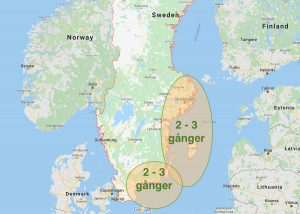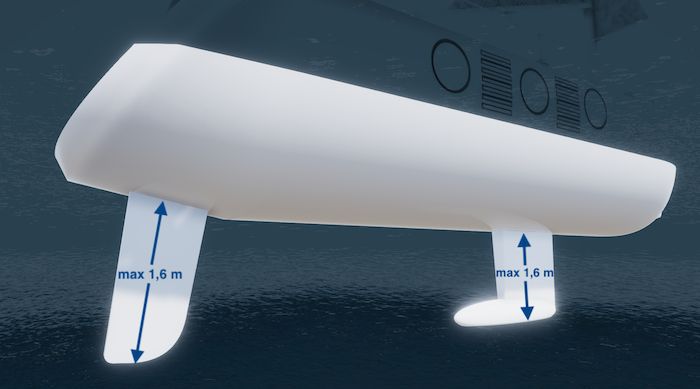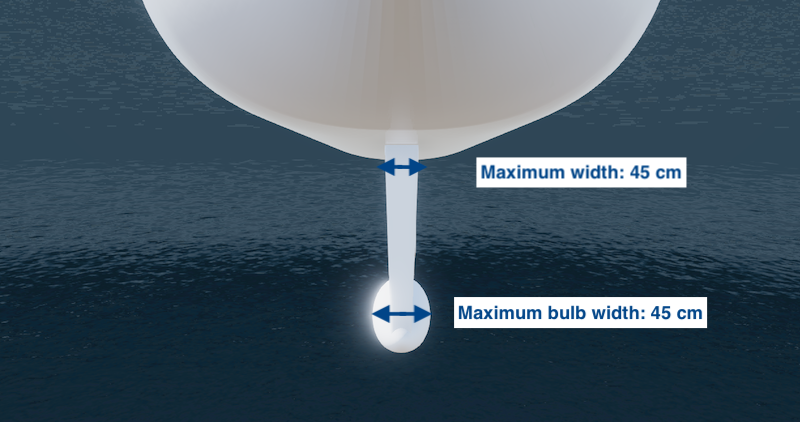For Boat Owners
Are you looking to replace toxic antifouling with a frequent hull cleaning programme? Then there are three things you need to look into: 1. Make sure your boat meets the specifications, 2. Find out when and how often you should clean the hull and 3. See if there is a hull cleaning machine near you.

Specifications

Cleaning Frequency
Find location
Tips & Tricks
- to make your boat life easier
Frequently Asked Questions
For the best results throughout the boating season, we recommend regular use so that the marine fouling never has time to become a real fouling hazard. If you don’t manage to clean your boat regularly, it’s no disaster. Our cleaners can remove even thick fouling such as adult barnacles and other resistant fouling! Read more about washing frequency under “How often should I clean the boat”.
The images on the right show a real-life example of an unpainted boat, which was not cleaned for the whole summer. By September, it was covered with both brown and green algae and adult barnacles. The boat was cleaned with our mobile MINIWASH boatwasher, and all fouling was removed in the space of 20 minutes!
To optimize boat performance, hull cleaning is desirable as soon as fouling accrues, normally every 4-12 weeks. Factors that impact on cleaning frequency include:
- Geographical location
- Regional variations
- Water temperature
- Water salinity
- Frequency and duration of boat usage
- Boat speed
For best results regular cleaning is recommended. This will prevent marine fouling building up.
Specifications
The BIGWASH machines clean most motor boats and sailboats up to 53 foot, with a few exceptions. Select your type of boat and find out if the hull on your boat can ble cleaned.
Sailboats - checklist
Keel and rudder length
The keel length must not exceed 2,4 meters from the waterline to the bottom of the keel. The length of the keel itself must not exceed 1,6 meters (from the bottom of the hull to the bottom of the keel).
The same goes for the the rudder; the length must not exceed 1,6 meters. If the rudder is longer than 1,6 meters, you must notify the operator and the brushes will be stopped before they get close to the rudder. The machine cannot clean sailboats with twin rudders.


Keel width
The keel width must at no point exceed 45 cm. That goes for the bulb width which normally is the widest part, but also the width of keel where the keel meets the hull. This means that older sailboats with a wide keel cannot be cleaned.
Bulb types
The machine can only clean sailboats with a straight keel, or bulbs/oval shapes no wider than 45 cm. The machine does not clean other bulb formations such as winged keel or flat keeled bulbs.
Can be cleaned
Cannot be cleaned
Motor boats
Outboard engines
Motorboats with an outboard engine has a hull that can be cleaned completely in the machine. The same goes for all types of motorboats where the propulsion/propeller sticks out in the stern such as water jets, surface drives and stern drives that can be tiltet up. On the stern, a hand held pressure washer can be used to remove fouling when accessible. The before and after renders below indicates which part of the hull that the machine is able to access and clean. As there are many hull types and individual differences, results may vary.
Surface drive
Water jet
Inboard engines
Motorboats with a centered shaft and propellers no wider than 30 cm in diameter have hulls that can be cleaned completely in the machine. If the propellers are larger than 30 cm in diameter, the hull can be cleaned up until the point where the shaft exits the hull.
Boats with double shafts or pod drive have a hulls that can be cleaned up until the point where the shaft exits the hull. The same goes for the pod drive.

